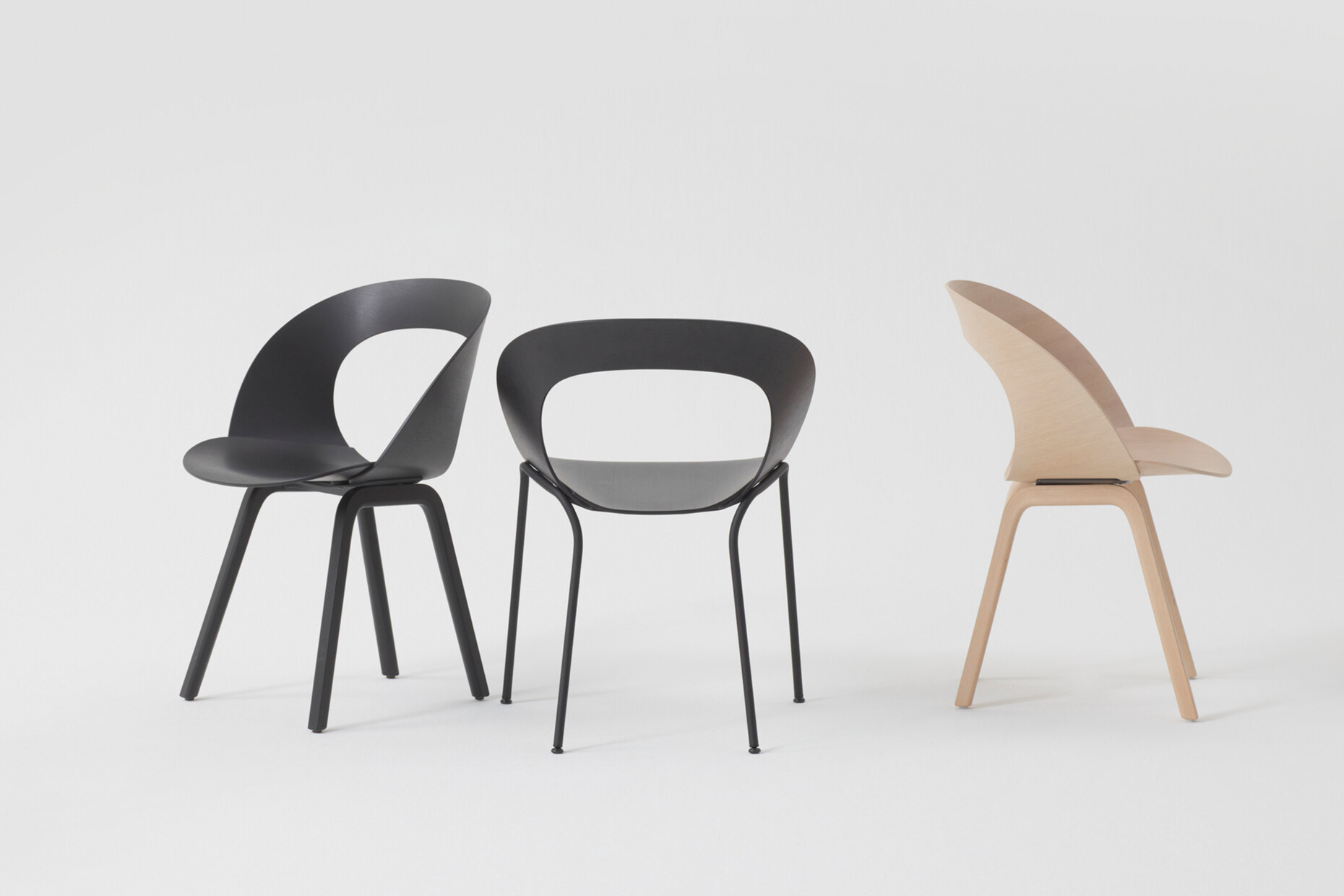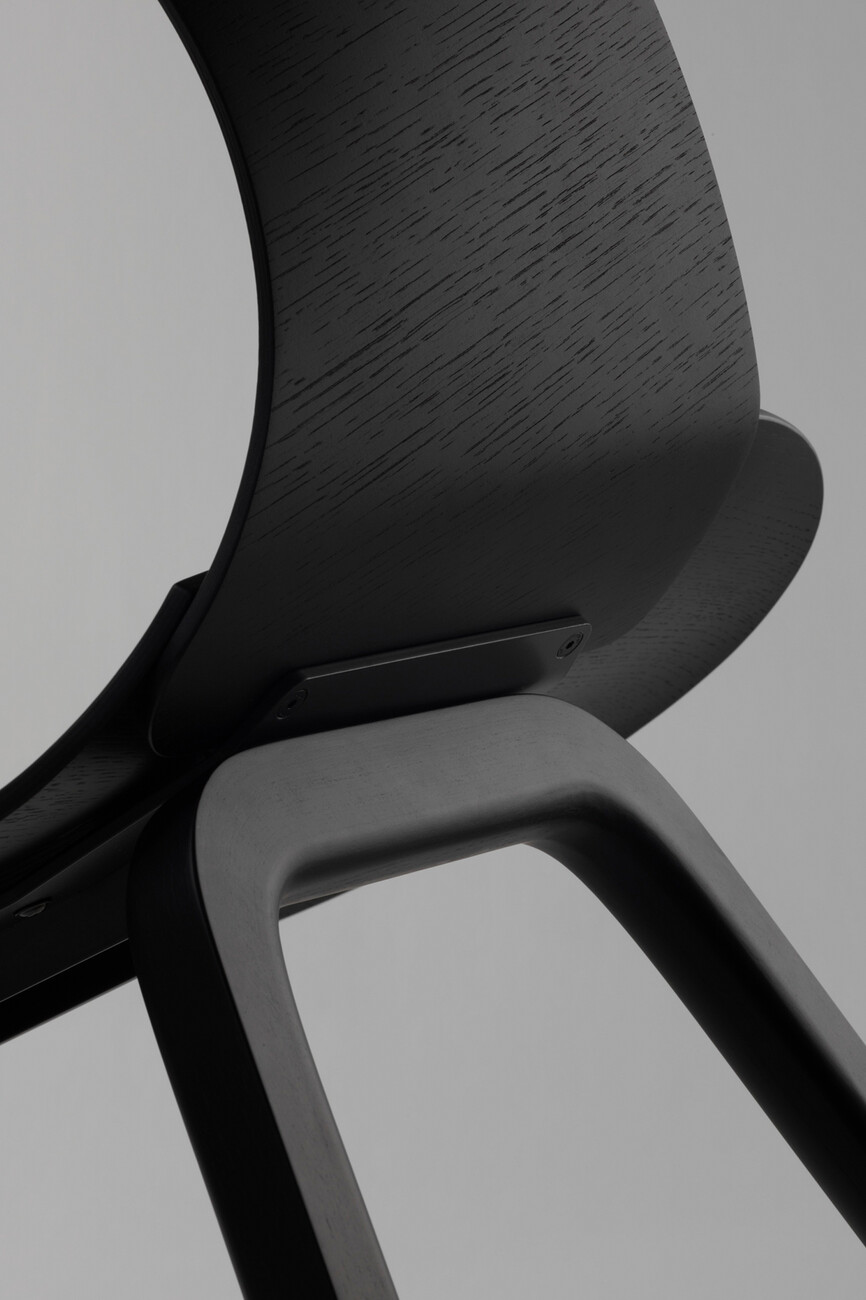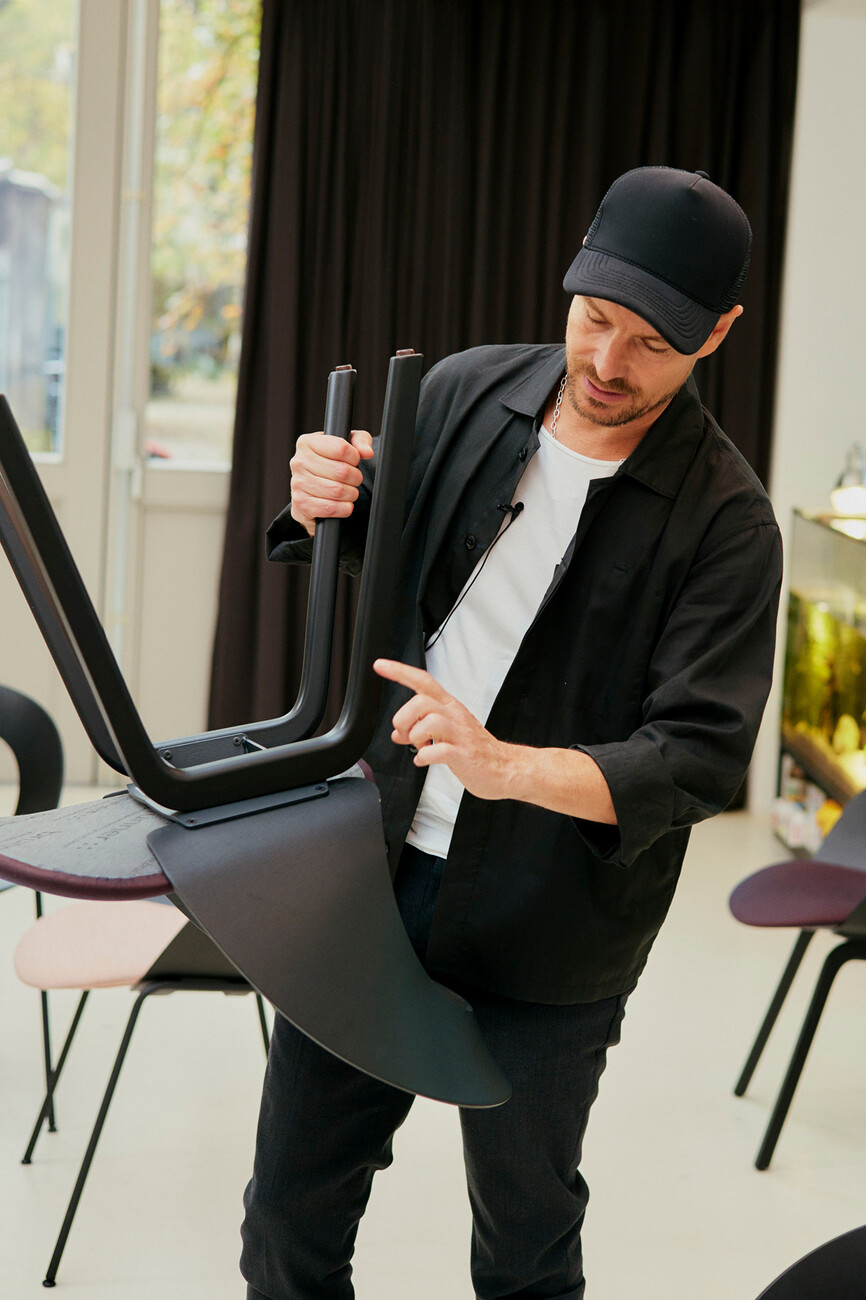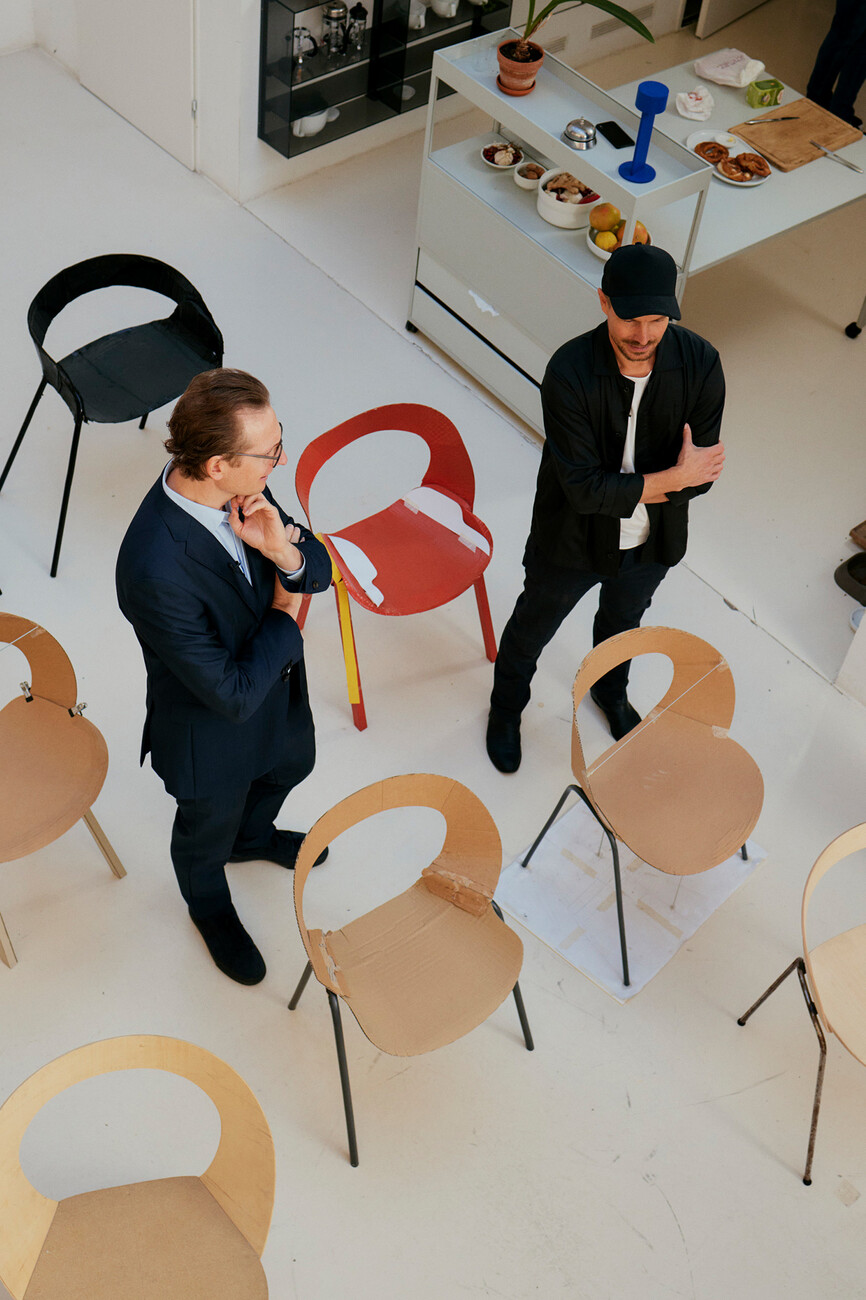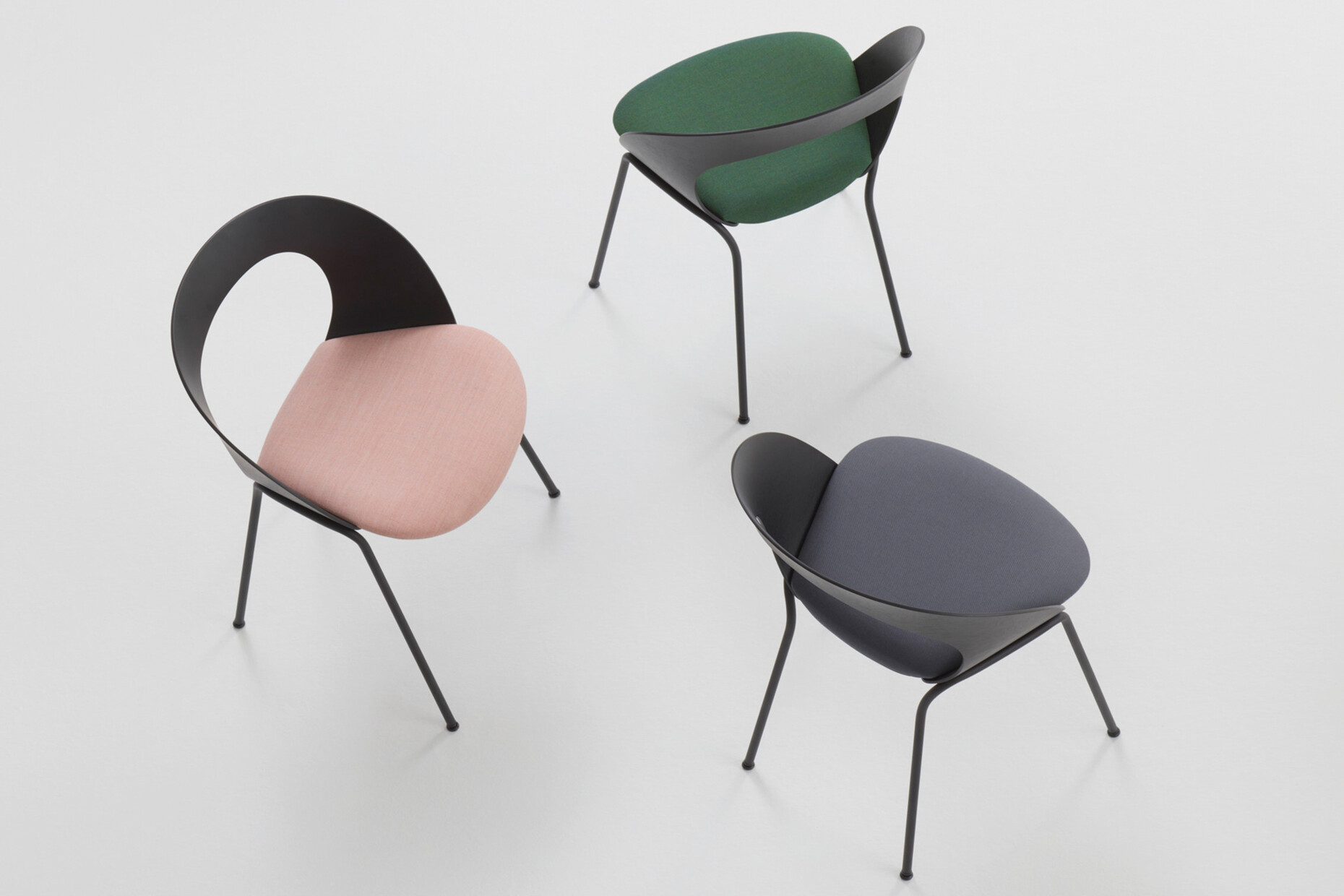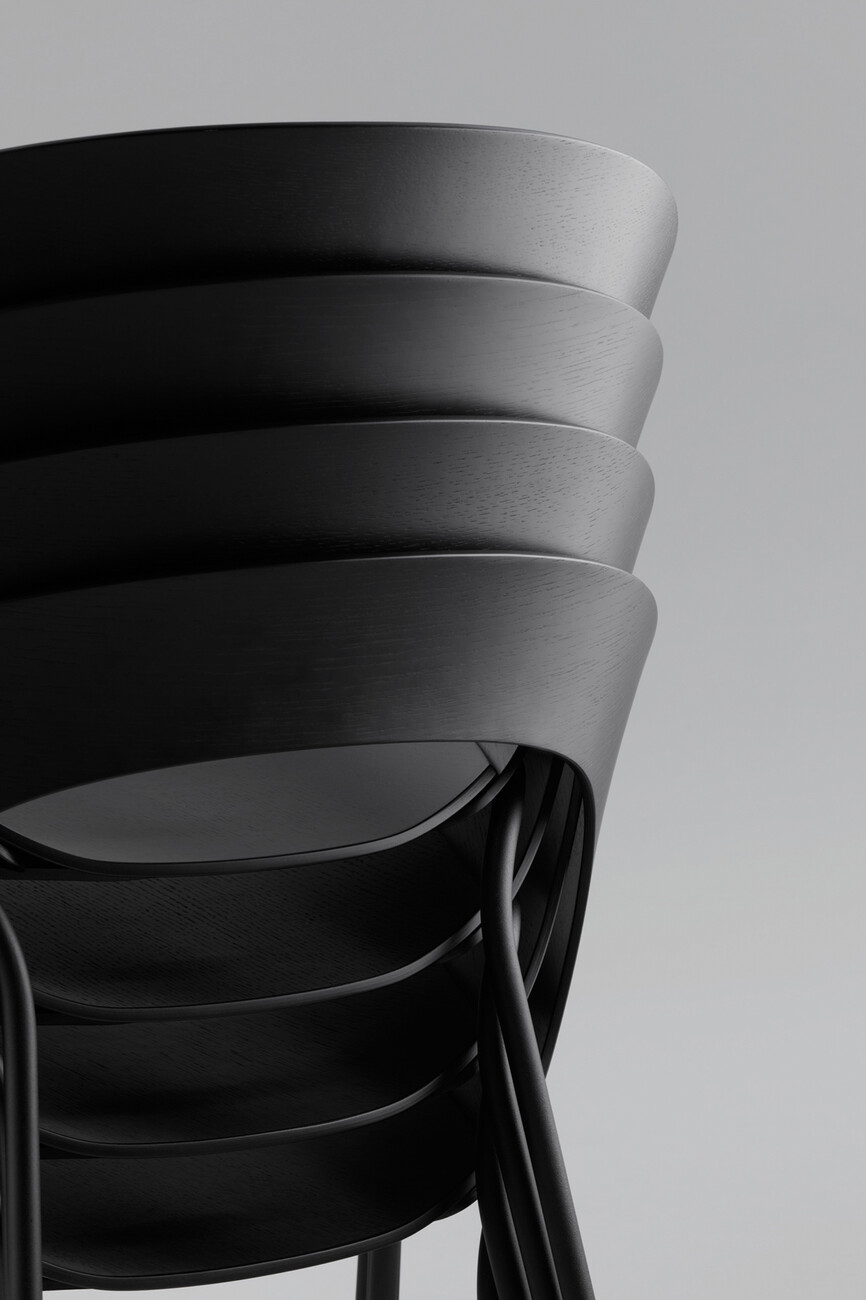Evolution of the form
The molded wood chair is a classic of modern furniture design: since its development, designers have come up with countless variations of this typology. It is correspondingly challenging to add something new to the canon of forms – an approach that the contract furniture manufacturer Brunner from Baden has now consistently pursued in collaboration with the Munich designer Stefan Diez. The result is called "mudra" and is convincing as furniture with a clear design language and a wide range of possible applications. For this, a 3D molded wood technology with a high level of manufacturing complexity was used: "We wanted to extract what captures 70 years of plywood history in the best sense of the word. Mudra is all about evolution," says Stefan Diez about the design.
A central feature of "mudra" is the open loop shape of the backrest. The name of the chair refers to the designation for symbolic hand gestures from Hinduism and Buddhism, in which the closed circle stands for a particularly good flow of energy. Stefan Diez was also inspired by the organic loop shape of baroque chair designs from the 17th century. In "mudra", this is not only a design element, but also has a functional basis: For example, even many chairs still appear light and filigree when combined, as the open backrest allows for visual penetration of the room. In addition, "mudra" is easy to transport and is available with both a steel frame and a wooden frame, with the steel frame being stackable. "A Brunner piece of furniture should not only look good, but also function well. The stackability of the main product is therefore essential. This makes it a typical Brunner product. We see 'mudra' as a universal chair that can function in different contexts, in the cafeteria, in the hospitality sector – the chair has countless areas of application," says Managing Director Dr. Marc Brunner.
However, not only functional and design aspects played a role in the development of "mudra", but also a sustainable design approach. For example, the material input was to be as economical as possible through intelligent manufacturing. At the same time, sustainable, easily recyclable and recycled materials were selected for production, which can be separated by type without any problems. In addition, the respective individual parts of the chair can be easily exchanged and replaced. Particularly in the catering and hotel industry, this enables the product to have a long service life, as Dr. Marc Brunner explains: "The whole design has such a durable quality that it will never end up in the trash. When it has been used in the hospitality industry for five years, replacing the seat cover or other elements becomes relevant. The upholstery can then be replaced on site without having to go to the factory. Brunner guarantees to be able to supply all spare parts for 'mudra' even in ten years' time. And we will make this as easy as possible for our customers and absolutely fair in terms of price."

